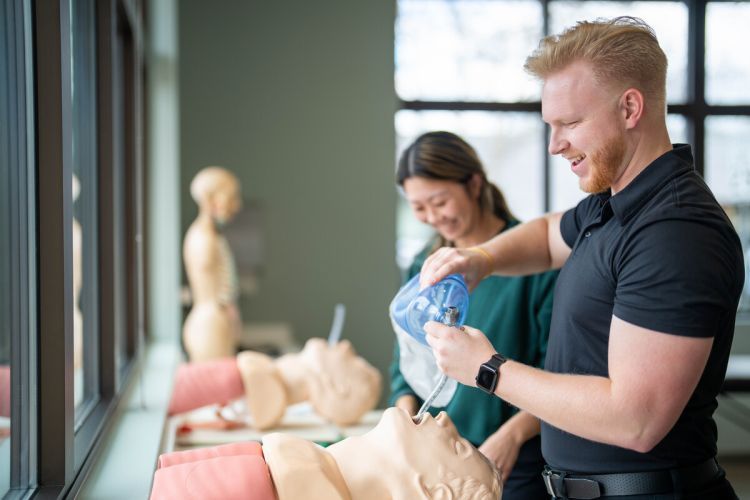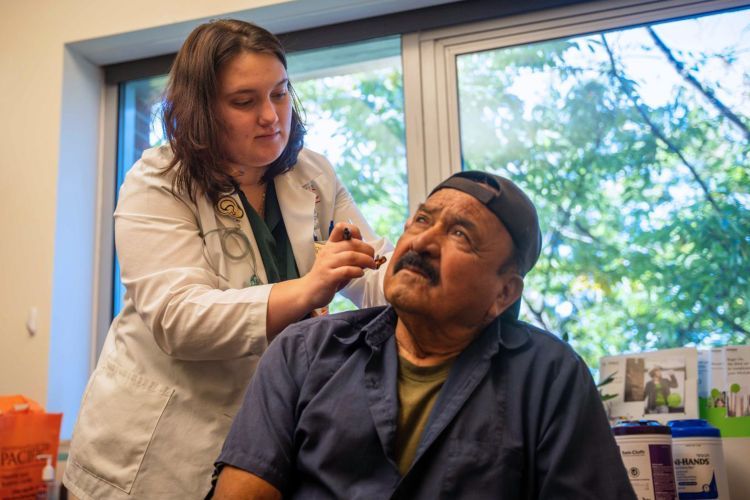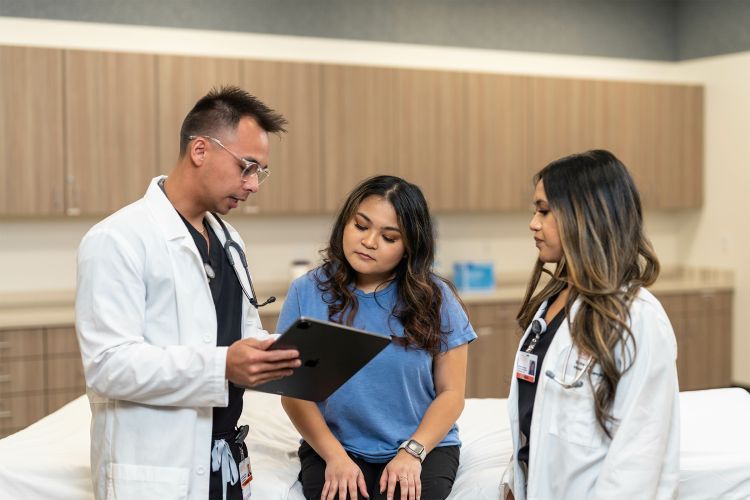Breadcrumb
Pacific researchers unlock how music connects listeners

Gabriella Musacchia holds one of the headsets used in her research on brainwaves.
Research conducted by audiologists at University of the Pacific is unlocking how the brain interacts, helping to understand the science behind everything from how people learn to the bond between mothers and babies.
The study, recently published in Brain Sciences, examined people’s brainwaves after playing music together. Previous studies have shown brains can synchronize while playing music; Pacific’s research looked at what happens when the music stops.
“What we found is that the two brains continue to be synchronized after they have stopped playing music, so we're on the same wavelength, literally,” said Gabriella Musacchia, chair of Pacific’s audiology department. “That has a host of implications.”
The phase of brainwaves can determine how receptive someone is to a particular sound.
“Music is said to promote social bonding and social awareness. In fact, music is used for many different disorders as a pathway to nonverbal social bonding and relationship building,” said Musacchia.
For the experiment, six University of the Pacific graduate students, three faculty members (two from Pacific and one from University College Cork) and an 8-year-old formed groups of two. Each pair wore a special Bluetooth headset and had a drum machine between them.
“There are sensors inside (the headsets) that come into contact with the scalp and pick up the brainwaves,” said Patty Anderson ’22, a graduate student in audiology who was one of the participants.
“There was a period of measurement before the collaborative drumming began to get a baseline for each person participating, which was about a minute in duration. Then we did the collaborative drumming for another minute or two,” Anderson said.
Participants started by playing a simple back-and-forth rhythm which became more difficult by increasing the speed. Once they decided to stop, their brainwaves were recorded and compared before and after the music session.
“We were really surprised at how strongly synchronized the brainwaves were,” Musacchia said.
They found participants’ brainwaves were 20 to 30% more synchronized than before, and the longer people played together, the stronger the synchrony.
“That says something about the nature of music. If you play together longer, you start to synchronize your brains more. We become closer to having a shared experience of the world around us,” said Musacchia.
It was her experience performing as a professional trumpet player that first got her interested in the field.
“That's how I got into neuroscience. I was on stage one day, and I was looking out into the crowd, and I was thinking, ‘what is going on in these people's brains? They are going crazy. What is it?’” she recalled.
Musacchia conducted the research, funded by the National Science Foundation, with Alexander Khalil, ethnomusicologist and cognitive scientist at University College Cork in Ireland, and John Rehner Iversen, a cognitive neuroscientist at the University of California, San Diego.
The team was part of a National Science Foundation Science of Learning network whose purpose is to understand how people’s brains interact.
“That’s important for a few reasons," Musacchia said. "One is that learning is interpersonal. That’s the way learning happens in classrooms and in the home. Many of the challenges to learning might be traced to not just what’s happening in an individual person’s processing system, but how they’re understanding the cues from the interpersonal relationship.”
Musacchia is now looking to expand the research in several areas, including whether similar results are produced in various groups of people, such as those on the autism spectrum, those with language learning delays or the elderly.
She also plans to do research involving infants by looking at how their brains synchronize with their mother’s lullabies.
“One of the things that is a concern is how well premature infants bond with their moms, so we would look at their ability to synchronize with the mother’s song, and see if that changes over time, or if there are certain cases where that is deficient or delayed,” Musacchia explained.
Other avenues of interest include testing how many people researchers can synchronize at the same time and how long the synchronization lasts—all to better understand the social bonding effect of music.





